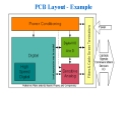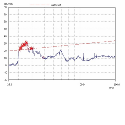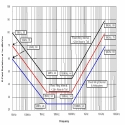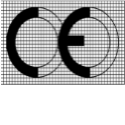Peak Electromagnetics Ltd
With our unrivaled expertise and knowledge of electromagnetic effects, at Peak Electromagnetics we aim to resolve all of your EMC (electromagnetic compatibility) and related issues with our comprehensive EMC solutions. We are a a small EMC solutions consultancy who pride ourselves on being flexible and responsive to customer needs.
Established in 2004 to serve the defence, aerospace, commercial and oil sectors, we have satisfied many and diverse customers over the years. From the small tasks, such as identifying a noise path in an ultrasonic transducer to much larger projects such as safety assessments of complex oil tools and CE marking of a specialist measurement systems, we specialise on everything in between.
Our customers have included Weatherford, Thales, NDT Solutions, FLIR, Nan Gall, Sentergy, Expro Group, Welltec, Titan Specialties, Guardian Global Technologies, AWE and Intertek.
Our capability is based on the expertise of our principle and associate consultants gained over decades of work in the fields of radio frequency (RF), telecommunications and electromagnetics. With a heavy bias towards the safety aspects, we are in the position to be able to offer more than just EMC compliance.
A full list of our capabilities can be found at the bottom of this page or on our website.
EMC Design Techniques
We provide expert and comprehensive EMC design techniques and remedial countermeasures.
EMC is often mistaken for a test discipline, when in fact it is a complex design regime with all aspects of the design being critical to the EMC of a product. It is advisable to design EMC into a product to ensure the most cost effective realisation of the product. At Peak Electromagnetics we have been involved in a variety of EMC design techniques and the development of some products from the concept stage. This way we have ensured that the best EMC practices are embedded in the design.
If you have a product demonstrating poor EMC qualities, then we have expertise to help you remedy these issues. Using a hands-on approach we will look at the issues in depth and propose the best way forward. In the past this has ranged from a simple reorganisation of an input/output interface box on a complex system to a complete re-engineering of a test instrument’s enclosure.
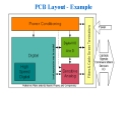
Oil Sector RF Safety Assessments
Oil sector RF safety assessments for detonators and their firesets:
From drawing on vast experience in the defence sector in the field of radio hazards (RadHaz) to electro-explosives, we have been assessing the effects of radio frequency (RF) energy on downhole systems in the oil sector. These systems include perforating guns, gas cutters, plugging tools, cable cutters, detonator systems, firesets, safety subs, well tractors, surface test boxes and any other item that may be in a tool string.
Over time these Oil sector RF safety assessments have increased in scope to include other aspect of safety, including the impact of stray voltages, fluid ingress, lightning and ESD, and now normally incorporate a Failure Modes and Effects Analysis (FMEA). All assessments are peer reviewed.
EMC Test Procedures
We employ the most comprehensive and professional EMC test procedures (UKAS) - Mil Std 461/462, Def Stan 59-41, AECTP 500, DO160.
We have been involved in the UKAS accreditation of three EMC test laboratories. This experience and our good working relationship with UK assessors, leaves us in a good position to write the EMC test procedures to enable a smooth accreditation of a test facility. One aspect of test procedures that often cause problems are the Measurement Uncertainty Calculations. We have a range of standard worksheets that enable these to be performed with ease.
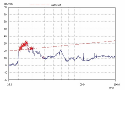
Non-ionising Radiation Assessments
Non-ionising radiation can be in the form of electromagnetic radiation (radio waves), electric and magnetic fields, ranging from 0 Hz (DC) to light frequencies. Exposure to these fields can have certain health effects, the limits of which are controlled by the ICNIRP (International Committee for Non-Ionising Radiation Protection) guidelines. The sources of the radiation can range from radio/cellular transmitters and overhead power lines to MRI scanners and welding machines.
To protect both workers and the public, non-ionising radiation assessments of the fields from a process needs to be performed. These non-ionising radiation assessments may also include physical measurements. Currently this requirement falls under general health and safety legislation, but is soon to be embodied in law under the EMF Directive. Although it is unlikely that the targeted 2012 implementation of this legislation will be met, the Physical Agents (Electromagnetic Fields) Directive (2004/40/EC) will become embodied in law at some point. This directive requires that all work places have a risk assessment performed to identify any possible health effect from electromagnetic fields. In most cases this is likely to be a paper exercise, but in some situations measurements will be needed. Our expertise in electromagnetic effects places us in a good position to perform these assessments.
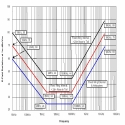
CE Marking Compliance
In order to maintain a unbiased and even market across the European Union, the Commission has put in place a number of directives for CE marking compliance. In the early days these were primarily safety related, they have now broadened their scope to other areas including EMC. The current EMC Directive (2004/108/EC) requires an equipment manufacturer or importer to ensure adequate EMC of their products. It includes several routes to compliance, including a theoretical EMC analysis and full product testing.
A clarification of the law recently brought the majority of military equipment under the remit of the EMC Directive. Again several routes to CE marking compliance are available and a pragmatic approach is advocated. Prior to CE marking a product other Directives, such as the Low Voltage and Machinery Directives (2006/95/EC and 2006/42/EC), may also apply. Peak Electromagnetics can guide you through the maze of requirements to the ultimate declaration of compliance for your products.
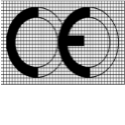
EMC for Functional Safety
Another area of EMC gaining prominence in recent years is the importance of EMC for Functional Safety. The EMC Directive specifically excludes safety of the product. Nevertheless there is a common misunderstanding that satisfying the EMC Directive ensures the product safety. This situation may leave a manufacturer open to prosecution, especially if an incident were to occur. Currently there are still ongoing debates on how to demonstrate EMC for Functional Safety. We at Peak Electromagnetics prefer a pragmatic risk based approach, using the techniques and procedures developed for the oil sector assessments discussed above and experience in the field of radio hazards.
The above examples demonstrate how our broad experience can be applied to a wide range of technologies and markets. For further details on the services we offer please visit our website or call/email to discuss how we may assist you in your product development.

Find Us on Google
We can be found on Google.co.uk


